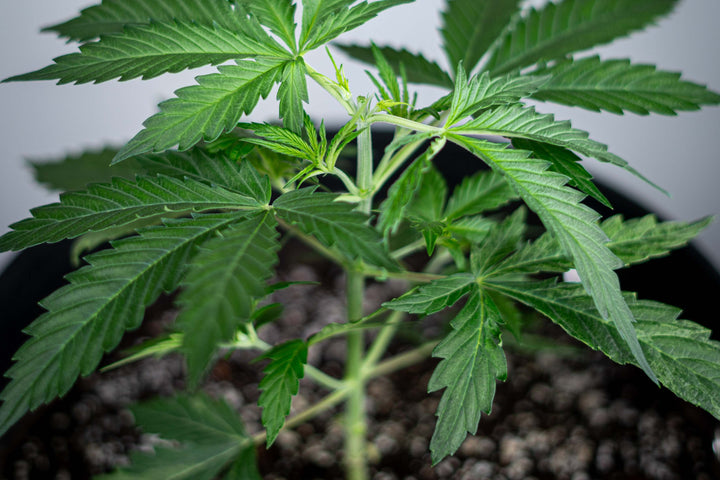The Best Environment for Your Cannabis Plants

Growing cannabis can be a rewarding hobby, whether you’re a seasoned grower or just starting out. One of the first decisions you’ll face is choosing between growing your plants indoors or outdoors. This decision will greatly impact the quality and yield of your cannabis.
In this article, we’ll explore:
- The key differences between indoor and outdoor growing methods for cannabis, highlighting the specific advantages of each.
- Essential factors to consider when choosing an environment, such as the ideal temperature cannabis plants like, lighting, and humidity levels.
- How to optimize conditions for greater yield and eventual quality of the cannabis harvest, tailored to both indoor and outdoor settings.
Introduction to Cannabis Cultivation
Growing cannabis can be a fun and educational experience. But before you get started, it’s important to understand the basics. They require specific conditions to thrive. These conditions include the right amount of light, water, and nutrients.
Whether you choose to grow indoors or outdoors, you need to provide these essentials. Each growing environment has its own unique set of challenges and benefits. Knowing these will help you make an informed decision.
Why Choose the Right Environment?
Choosing the right environment is crucial. The environment will affect the plant’s growth, health, and yield. A well-suited environment can lead to a bountiful harvest, while a poor choice can result in weak plants and low yields.
By understanding the differences between indoor and outdoor growing, you can optimize your plants’ conditions and ensure they reach their full potential.
Pros of Growing Cannabis Indoors
Growing cannabis indoors offers several advantages. Here are some key benefits:
Climate Control
One of the biggest advantages of indoor growing is the ability to control the climate. You can adjust the temperature, humidity, and light levels to create the perfect environment for your plants. This control allows for year-round cultivation, regardless of the weather outside.
Security and Privacy
Indoor growing provides more security and privacy. It’s easier to keep your plants hidden from view, which reduces the risk of theft or unwanted attention. This is especially important if you live in an area where cannabis cultivation is still a sensitive issue.
Pest and Disease Prevention
Indoor environments are easier to keep clean and free of pests and diseases. You can use air filters and other methods to keep harmful insects and pathogens away from your plants. This reduces the need for pesticides, making your cannabis healthier and safer to consume.
Cons of Growing Cannabis Indoors
Despite its advantages, indoor growing also has some drawbacks. Here are a few to consider:
Higher Costs
Setting up an indoor grow space can be expensive. You’ll need to invest in lights, fans, air filters, and other equipment. Additionally, indoor growing typically uses more electricity, which can lead to higher utility bills.
Space Limitations
Indoor growing spaces are often smaller than outdoor areas. This limits the number of plants you can grow at one time. If you want to grow a large quantity of cannabis, you may need to invest in a larger indoor setup, which can be costly and complex.
Intensive Labor
Indoor growing requires more hands-on work. You’ll need to monitor your plants closely and make frequent adjustments to maintain optimal conditions. This can be time-consuming, especially if you’re managing a larger grow operation.
Pros of Growing Cannabis Outdoors
Natural Sunlight
Sunlight is one of the most important factors for plant growth. Outdoor cannabis plants benefit from the full spectrum of natural sunlight, which is difficult to replicate with artificial lights. This can lead to stronger, healthier plants and higher yields.
Cost Efficiency
Growing outdoors is generally less expensive than indoor growing. You don’t need to invest in costly equipment like lights and fans. Additionally, natural rainwater can reduce your water costs, and outdoor soil often requires less supplementation than indoor growing mediums.
Larger Yields
Outdoor plants have more space to grow, which can result in larger plants and bigger yields. If you have ample outdoor space, you can grow many plants without the constraints of indoor setups. This makes outdoor growing ideal for those looking to maximize their harvest.
Cons of Growing Cannabis Outdoors
While outdoor growing has its perks, it also comes with its own challenges. Here are a few drawbacks to consider:
Weather Dependency
Outdoor growing is heavily dependent on the weather. Extreme temperatures, heavy rain, or drought can all negatively impact your plants. This lack of control can lead to unpredictable growing conditions and potential crop loss.
Pest and Disease Risks
Outdoor plants are more exposed to pests and diseases. Insects, animals, and pathogens can all pose a threat to your plants. While there are organic methods to manage these risks, they can be less effective than indoor pest control measures.
Security Concerns
Growing cannabis outdoors can pose security risks. Your plants are visible and potentially accessible to thieves or unwanted visitors. This is a significant concern if you live in an area where cannabis cultivation is not fully accepted or regulated.
Key Factors to Consider
When deciding between indoor and outdoor growing, consider the following factors to help guide your decision:
Climate
If you live in a region with a favorable climate for cannabis, outdoor growing can be very rewarding. However, if your area experiences extreme weather conditions, indoor growing may provide a more stable environment for your plants.
Budget
Your budget will play a significant role in your decision. Indoor growing requires a higher initial investment but offers more control over growing conditions. Outdoor growing is more cost-effective but comes with higher risks due to environmental factors.
Space
The amount of space you have available will also influence your choice. If you have a large yard or outdoor area, you can benefit from the larger yields of outdoor growing. If space is limited, an indoor setup might be more practical.
Steps for Successful Indoor Growing
If you decide to grow cannabis indoors, follow these steps to ensure success:
Choose the Right Equipment
Invest in high-quality lights, fans, and air filters. LED lights are a popular choice because they are energy-efficient and provide the necessary light spectrum for plant growth.
Control the Environment
Maintain optimal temperature and humidity levels. They thrive in temperatures between 70-85°F (21-29°C) and humidity levels between 40-60%. Use fans and dehumidifiers to regulate these conditions.
Monitor and Adjust
Keep a close eye on your plants and make adjustments as needed. Regularly check for signs of nutrient deficiencies, pests, or diseases. Adjust lighting and watering schedules based on your plants’ growth stages.
Steps for Successful Outdoor Growing
If you choose to grow cannabis outdoors, here are the steps to follow:
Select the Right Location
Choose a sunny spot with good drainage. They need at least 6-8 hours of direct sunlight per day. Avoid areas prone to flooding or poor drainage.
Prepare the Soil
Enrich the soil with organic compost and nutrients. Well-draining soil with a balanced pH level (6.0-7.0) is ideal for cannabis growth. Test the soil and amend it as needed to create optimal conditions.
Protect Your Plants
Use natural pest control methods to protect your plants. Companion planting, neem oil, and insecticidal soap are effective organic options. Additionally, consider fencing your garden to keep out animals and unwanted visitors.
Tips for Growing Cannabis Successfully
When managing your cannabis plants, one effective strategy to promote bushier growth and increase yields is topping cannabis plants. This technique involves cutting off the top of the main stem, which encourages the growth of multiple side branches. As a result, your plants can develop a fuller canopy, allowing for better light penetration and potentially leading to more abundant harvests. Additionally, always ensure to use sterilized tools when performing any pruning to minimize the risk of infection.
Conclusion
In summary, whether you choose to grow cannabis indoors or outdoors, each method has its distinct advantages and challenges. Outdoor cultivation often provides the benefit of natural resources, larger yields, and lower costs, while indoor growing allows for controlled environments and year-round cultivation. It’s essential to carefully evaluate factors such as climate, budget, and available space to make an informed decision suited to your circumstances. For more insights and resources on cannabis cultivation, visit BudTrainer. Here, you’ll find a wealth of information to help you succeed in your growing journey.


Average Rating